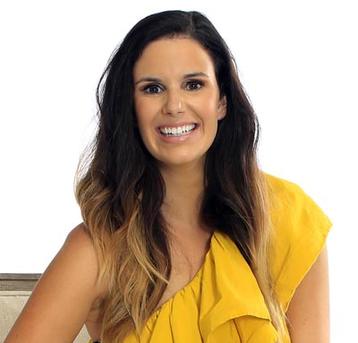There is nary an event these days (weddings included) that doesn’t have a hashtag. Anywhere social media has infiltrated, so too has its literary sidekick.
Originating on Twitter, the hashtag was born as a way to improve content filtering. As the Social Times explain, the use of hashtags has grown to the point where “this symbol has become associated or even synonymous to trends and discussions for social media.” While brands have traditionally utilised the hashtag’s #trending ability for launches, Schwarzkopf has taken a unique approach, using it for consumer understanding.
Via the hashtag, #badhairday, discovered the top excuse relating to hair. The post is so popular that of last week, there were 1,016,490 images with that hashtag. In comparison, #goodhairday was three times less popular. Inspired by their findings, the company put together The Bad Hair Day survey to discover just how accurately the hashtag reflects reality.
The survey results revealed three in five people claimed to have more bad hair days than good hair days. It was found 55 per cent experienced them between three to seven times a week, 48 per cent said they reduced their confidence and performance in the workplace, and 20 per cent believed a bad hair day made them shy around the opposite sex.
But what does this mean for brand marketing and, more specifically, Schwarzkopf’s plans to combat this excuse? BD spoke to Schwarzkopf communications manager Lauren Gooch to find out.
Why do you think #badhairday is three times more popular than #goodhairday on Instagram?
With anything in life, almost by default we focus on the negative first. The negative tends to ‘stick’ with us longer and have a deeper impact. Striving for happiness through positive thinking doesn’t come as naturally or easy to most.
Why do Australians tend to focus on the negative rather than the positive when it comes to posting on social media?
I feel like having pride in your appearance, and admitting to it openly on social media for the entire world to see is taboo. We never admit to the number of hours spent in the bathroom getting ready. We don’t take a compliment, deflecting attention from “you look great today!” with excuses like, “oh, really, I bought this dress really cheap and just threw it on”. We should be saying “s**t yeah! Thanks, I look hot, hey!” It’s almost like we are conditioned to respond as though we don’t deserve it, and by posting something on social media, you have nowhere to hide.
Do you believe social media encourages this?
Social media simply puts the life you want to portray out there for all to see. We see three times as many #badhairdays because people want to portray themselves as normal. It’s also a way to boost their confidence - posting for the likes and comments to counter the negative.
What does this mean for beauty brands?
I think beauty brands do and will continue to utilise this, encouraging both confidence in your natural self with campaigns like the hugely viral #nomakeupselfie and showcasing the best that beauty can offer. No woman can deny we love to know what’s new, what’s trending, and what celebrities are doing.
How does this negativity affect the way brands market to consumers?
Ultimately, I think social media is a positive place, and the brands that play well in this space can only benefit. We view social media as a place to better relate to our fans and be more like their friend than a corporation. It also allows us to break away from traditional media and traditional brand creative.
Do you believe hair plays an important part in terms of our self-esteem?
Our hair plays a huge part - it is both functional and emotional. On the functional side, having groomed, healthy-looking hair indicates you take care of yourself. Emotionally, it can make you feel more beautiful and attractive to the opposite sex, and even youthful, all of which build self-esteem and confidence within ourselves.
What are the three most common complaints when it comes to hair?
The top hair complaints relate to hair lacking volume, shine and frizz. The top excuses we make stopping us from actively overcoming these issues are: we don’t have enough time, don’t know what products to use or how to use them, and cost.
How is Schwarzkopf working to address these issues?
A survey we conducted in May 2014 highlighted that while women understand the need and have the intention to look after their hair, they fall short on actually taking action for various reasons. We also understand that good hair days lead to a greater overall feeling of confidence in oneself, so we wanted to take a firm stand on calling people out on the excuses that are stopping them from achieving good hair days and provide them with the tools to overcome these excuses and achieve results. We call this ‘Hair Happiness.’ This year we are focusing on helping our audience to overcome these excuses, turning bad hair days into good hair days, and celebrating and acknowledging improvements.
How important are consumer concerns when it comes to Schwarzkopf’s product development?
Having a strong consumer understanding is at the core of everything we do, including new product development and consumer activations. Gaining your consumer’s attention is becoming more and more challenging in our market, making relevance key to our continued success.




